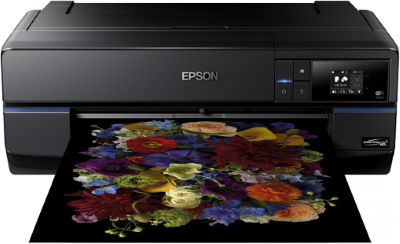Keith Cooper from UK commercial photo studio Northlight Images, has been reviewing photo quality inkjet printers for over 10 years and has come to the conclusion that, all other things being equal, it’s almost impossible to tell the difference between the same image printed on two current release printers using identical paper stock.

He says that by far the most important factor in the image quality equation is choice of paper, rather than choice of printer.
‘Most modern printers are as good as it’s going to get for quite a while. There are differences, but they are increasingly small,’ he said in a recent podcast entitled What printer marketing doesn’t tell you.
He bases the assertion on a history of over 10 years reviewing inkjet printers and the resulting ‘huge great pile of prints I have’ – effectively a visual database of print quality.
He followed up by saying that, if done well, it’s almost impossible to tell the difference between two printers printing on the same paper – sheeting responsibility for bad quality prints home to sub-standard digital image files or poor workflow.
‘The biggest difference you’ll see between printers is actually your choice of paper,’ he said. The second most important factor is whether the printer is dye or pigment based, with pigment-based printers as a class tending to do a better job on black & white prints. Dye inks really shine (sorry) on high gloss and metallic surfaces.

‘In general it doesn’t really matter that much which printer I’ve used as long as I’ve been more than competent in my photography and the preparation of the image…If I get a duff print it’s almost certainly my fault because the photo is not up to it.’
He says that buying a new printer to make better prints is along the same line of reasoning as buying a new camera so you can take better pictures: ‘And the answer is almost always not,’ he said.
‘Modern printers are capable of such good results…But it doesn’t suit the marketing message – its not compelling to say a brand new release produces just as good prints as the previous model.
‘They will talk about extended gamut and a new inkset – and yes they do make a slight difference, but it will only be discernible compared to a test image to compare with others.’
Over the years Keith has printed hundreds of the same test print on which to base his assessment of printer quality. ‘The differences I’m seeing are almost always due to differences in paper, not the printer,’ he said.
Some printers might have a slightly wider colour gamut than others but if print workflow – from capture and editing the photo through to choice of paper and printing – is done well ‘you will get a good quality print’.
He implores photographers to simply ‘get the tech stuff right’: ‘Use colour management, industry quality calibrated monitors, and use printer profiles. You can tweak it, but even the tweaks don’t neccessarily make much of a difference.
‘It’s about the quality of your workflow and how you edit your pictures.’ (In four words – not Keith’s – ‘Garbage in, garbage out.’)
‘If you have a rubbish photo to start with,’ he said, ‘then all the expertise and printer quality in the world won’t help you get a good print.
‘It doesn’t matter which printer I use…The difference between the P900 and its predecessor the P800 (above left) in terms of print quality are almost invisible to most people. He noted there were other improvements – swappable blacks and a bigger and better LCD screen, for instance – which might sway a purchase decision.
Likewise, he says, the Canon Pro 10 and its replacement, the Pixma Pro300, use the same printhead and effectively the same inks ‘so there’s no surprise that there is no big difference in print quality,’ although the newer printer is far easier to use.
‘If looking for a new printer and you are looking at marketing materials, filter out some of the technical stuff – it’s there to impress people who deserve to be impressed by it.
‘See through it,’ he advised.





Be First to Comment